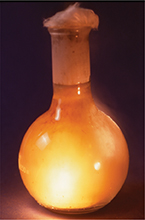Figure 10 Sodium metal reacts vigorously with chlorine to form sodium chloride, NaCl.
Interpreting Photos What evidence in this photograph tells you that a chemical reaction is taking place?

Synthesis
A synthesis reaction is a reaction in which two or more substances react to form a single substance. The reactants may be either elements or compounds. The product synthesized is always a compound. The general equation for a synthesis reaction is
Figure 10 shows what happens when sodium reacts with chlorine. The product of this reaction is the compound sodium chloride, which appears as a whitish cloud of solid particles. You are probably more familiar with sodium chloride as table salt. You can describe the synthesis of sodium chloride with the following equation.
Another example of a synthesis reaction is hydrogen and oxygen reacting to form water.
This reaction is used to generate electricity for satellites and spacecraft.

What is a synthesis reaction?
Decomposition
The opposite of synthesis is decomposition. A decomposition reaction is a reaction in which a compound breaks down into two or more simpler substances. The reactant in a decomposition reaction must be a compound. The products may be elements or compounds. The general equation for a decomposition reaction is
When electricity passes through water, the water decomposes into hydrogen gas and oxygen gas. You can describe the decomposition of water by writing the following equation.
Notice that this reaction is the opposite of the synthesis of water.
Another example of decomposition occurs in the making of cement. Cement factories use a giant kiln, or oven, to heat a mixture of clay and limestone. The heat causes the calcium carbonate in the limestone to decompose into lime, CaO, and carbon dioxide.
The carbon dioxide escapes the kiln through a smokestack. The clayand-lime mixture is cooled and ground into cement powder.
The How It Works box on page 201 describes a decomposition reaction that is used to make automobiles safer.





